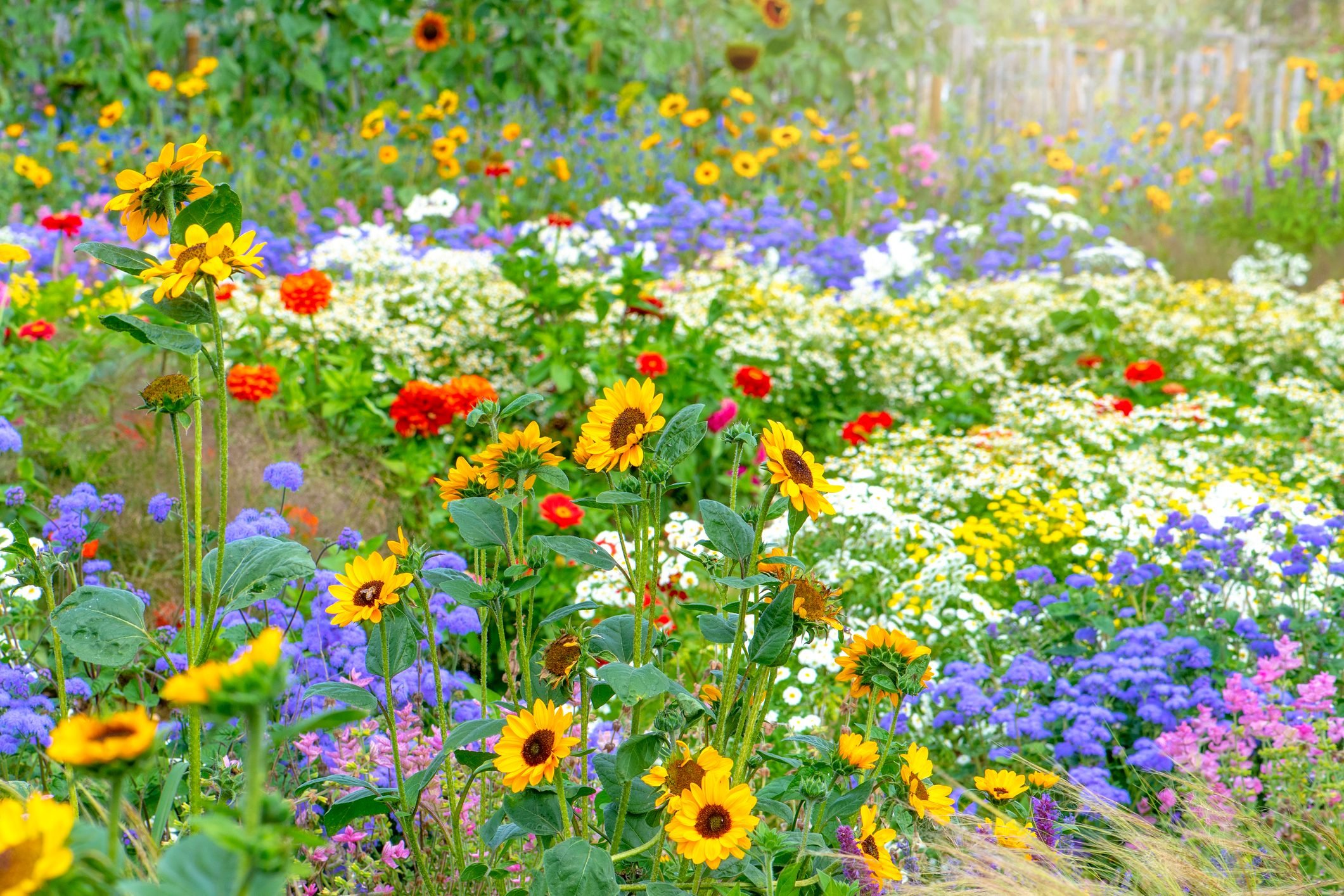Wildflower meadows are a great option for pollinators and nature-loving gardeners. Here's what to know before turning your yard into one.

7 Things To Consider Before Planting a Wildflower Meadow

My partner and I are renovating an abandoned house in a high-desert valley. It’s dusty and dry here, and nothing much grows without lots of effort, except a few native plants like chamisa and sage — and wildflowers.
Last year I sprinkled a corner of our barren yard with some native wildflower seeds. To my surprise, they grew into a colorful, lush patch of inspiration, accented by butterflies, miller moths and bees. I later learned homeowners across the country are planting similar patches, known as wildflower meadows, instead of grass.
“Wildflower meadow lawns are gaining in popularity as people become more aware of the environmental implications of lawn grasses,” says Shubber Ali, a native plant expert and CEO of Garden for Wildlife. “Planting a meadow lawn also creates vital habitat for declining wildlife populations.”
Wildflower meadows are especially beneficial for bees and other at-risk pollinators under pressure from habitat loss and pesticides. They also create vibrant mini-ecosystems that provide food and shelter for songbirds, insects and all the creatures who live near your home.
Plus, a wildflower meadow in your yard can make your life easier. Once established, your meadow needs less maintenance and water than turfgrass, so you can ditch the chemical fertilizers, herbicides and pesticides.
When deciding whether to create a wildflower meadow in your yard, here are some realities to consider.
On This Page
Aesthetics
While wildflower meadows epitomize beauty for some of us, they do look more unkempt than traditional lawns. That can create friction with neighbors and potentially violate Homeowners Association (HOA) rules and municipal regulations.
Educating those around you about the natural benefits of wildflower yards can go a long way toward changing attitudes. It also helps to make your creation look intentional, with features like orderly borders, a bird bath, a bench or a winding path.
Ease of Care
“Wildflowers and native plants can thrive on neglect,” says Ali.
Once established, they often don’t need much, if any, supplemental water. They also usually only need to be mowed once a year, at the end of the growing season. But even then, it’s best to leave part of it tall as overwintering habitat for pollinators.
They also don’t require fertilization or insecticides. That makes them the ideal habitat for wildlife and keeps synthetic chemicals out of freshwater sources.
Invasive Species
These plants, and weeds, are the biggest threats to meadow lawns. Both often beat out wildflowers and native plants, so do your best to diminish them before planting. Then be vigilant about removing any interlopers that pop up. The success of your wildflower meadow will depend on it.
Viability of Your Yard
For best results, choose an area with full sun and good drainage. Get your soil tested to determine the organic matter content and pH level so you can add any natural amendments.
If your yard lacks the perfect spot, don’t despair. Many wildflowers can still thrive in low-fertility soils, and with as little as a half-day of sun.
Lawn Removal
If you’re converting your lawn into a wildflower meadow, remove your turf before planting wildflowers. One method is soil solarization, which involves covering your lawn with black plastic for six to eight weeks to kill the grass. Then loosen the soil to help root development, sow the seeds, and level the ground with a rake.
While it’s not optimal to start a meadow on an existing lawn, that can also work. After spreading seeds on grass, refrain from weekly mowings.
Choosing Plant Species
Meadows can contain annual or perennial flowers. Obviously, annual meadows need to be re-sown each year. They also require more nutrient-dense soil.
Whichever way you go, the key is understanding your soil and climate, and choosing the right native plants accordingly.
Seeds vs. Plugs
You can start meadows with seeds, or try wildflower plugs, mats or turf.
Wildflower plugs are single plants or clusters of seedlings. Wildflower mats have seeds infused in compressed mulch, which you roll across an area and cover with a thin layer of soil. Wildflower turf is similar to turfgrass sod but with live wildflowers. Often local nurseries will carry all of these options, but you can also find them online.
Seeds and mats are the cheapest. Seeds offer the widest variety of species, but they also take longer to establish. “Using the proper and recommended number of seeds for the area is also important, as wildflowers will not thrive when overcrowded,” says Ali.
Wildflower plugs work best to supplement an existing meadow lawn. Turf is the most expensive, but can be the right choice for smaller areas.
Patience
While wildflower meadows ultimately take less maintenance than a grassy yard, they take some time to get established.
“Creating a meadow garden is very different from planting a traditional garden, as you often have to wait a couple of seasons to really see some growth,” says Ali. “However, a meadow garden will continue to evolve year to year without much annual maintenance.”




















